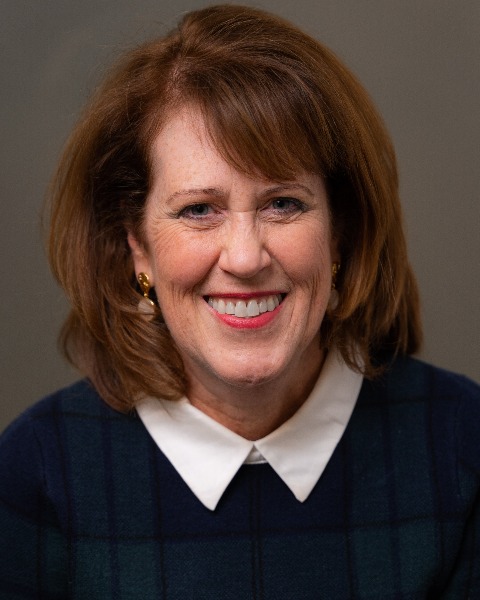QoL and Patient-Reported Outcome and Supportive Care
Poster Session 3
P-449: Role of Education and Empowerment in Multiple Myeloma patients
Friday, September 29, 2023
1:15 PM - 2:15 PM EEST

Jennifer M. Ahlstrom, BA (she/her/hers)
CEO/Founder
HealthTree Foundation, United States
Introduction: Multiple myeloma (MM) significantly affects patients’ (pts) lives, partly due to its complexity and variety of treatments. Health education has been reported to improve outcomes and self-management in cancer pts, suggesting that a growing abundance of resources to educate and empower could offset the burdens of MM. This study aimed to evaluate the impact of MM diagnosis on pts’ lives and study the differences in education and empowerment between pts with Newly Diagnosed MM (NDMM) vs. Relapsed and Refractory MM (RRMM).
Methods: HealthTree® Cure Hub for Multiple Myeloma is an online portal for pts with plasma cell dyscrasias to help navigate their disease. Using this platform, we conducted a 25-question survey covering patient education, empowerment, and the impact of MM diagnosis. We compared responses between NDMM and RRMM pts. The survey was determined to be of minimal risk and exempted by the WCG Institutional Review Board.
Results: Of 250 survey participants, 54% were NDMM. The majority were females (53%), college-educated (75%), with an age of 67±8 yrs. At diagnosis, both groups reported obtaining diagnosis-related data mainly from their healthcare team (92%). However, NDMM pts report a higher use of social media for this purpose (26%) than RRMM (19%), and NDMM reported less usage of medical journals (22%) than RRMM (39%). Additionally, in both groups, there was a dramatic increase in the use of online patient advocacy groups to get disease-related information, from 52% (at diagnosis) to 82% (current). Moreover, 79% of pts in both groups reported having a strong or higher desire to learn more about future treatment options. Both felt empowered by their relationship with at least one member of their healthcare team (87%), aiding in information gathering and decision-making. Furthermore, both indicated that care partners play a role in emotional support (79%) and decision-making (59%). Frequent impacts of MM on both patient groups involve exercise (60%) and hobbies (54%). Mental health (53%) and financial impact (55%) significantly increased by 15%-20% in RRMM compared to NDMM (38% and 35%, respectively). The financial burden is moderate to significant for NDMM pts at 67%, and even more so for RRMM pts at 77%. This financial strain reflects why over 44% of pts in both categories resort to using their personal savings to cover healthcare costs.
Conclusions: This survey highlighted the critical roles of healthcare teams and online patient advocacy groups in educating and empowering NDMM and RRMM pts, becoming increasingly important resources over time. MM mainly impacts exercise, the ability to do their favorite things, mental health, and finances, particularly in RRMM pts. Financial strain may have led to using personal savings for medical expenses. These findings underscore the importance of education, empowerment, and comprehensive support in addressing the physical and financial aspects of MM patient care.
Methods: HealthTree® Cure Hub for Multiple Myeloma is an online portal for pts with plasma cell dyscrasias to help navigate their disease. Using this platform, we conducted a 25-question survey covering patient education, empowerment, and the impact of MM diagnosis. We compared responses between NDMM and RRMM pts. The survey was determined to be of minimal risk and exempted by the WCG Institutional Review Board.
Results: Of 250 survey participants, 54% were NDMM. The majority were females (53%), college-educated (75%), with an age of 67±8 yrs. At diagnosis, both groups reported obtaining diagnosis-related data mainly from their healthcare team (92%). However, NDMM pts report a higher use of social media for this purpose (26%) than RRMM (19%), and NDMM reported less usage of medical journals (22%) than RRMM (39%). Additionally, in both groups, there was a dramatic increase in the use of online patient advocacy groups to get disease-related information, from 52% (at diagnosis) to 82% (current). Moreover, 79% of pts in both groups reported having a strong or higher desire to learn more about future treatment options. Both felt empowered by their relationship with at least one member of their healthcare team (87%), aiding in information gathering and decision-making. Furthermore, both indicated that care partners play a role in emotional support (79%) and decision-making (59%). Frequent impacts of MM on both patient groups involve exercise (60%) and hobbies (54%). Mental health (53%) and financial impact (55%) significantly increased by 15%-20% in RRMM compared to NDMM (38% and 35%, respectively). The financial burden is moderate to significant for NDMM pts at 67%, and even more so for RRMM pts at 77%. This financial strain reflects why over 44% of pts in both categories resort to using their personal savings to cover healthcare costs.
Conclusions: This survey highlighted the critical roles of healthcare teams and online patient advocacy groups in educating and empowering NDMM and RRMM pts, becoming increasingly important resources over time. MM mainly impacts exercise, the ability to do their favorite things, mental health, and finances, particularly in RRMM pts. Financial strain may have led to using personal savings for medical expenses. These findings underscore the importance of education, empowerment, and comprehensive support in addressing the physical and financial aspects of MM patient care.
